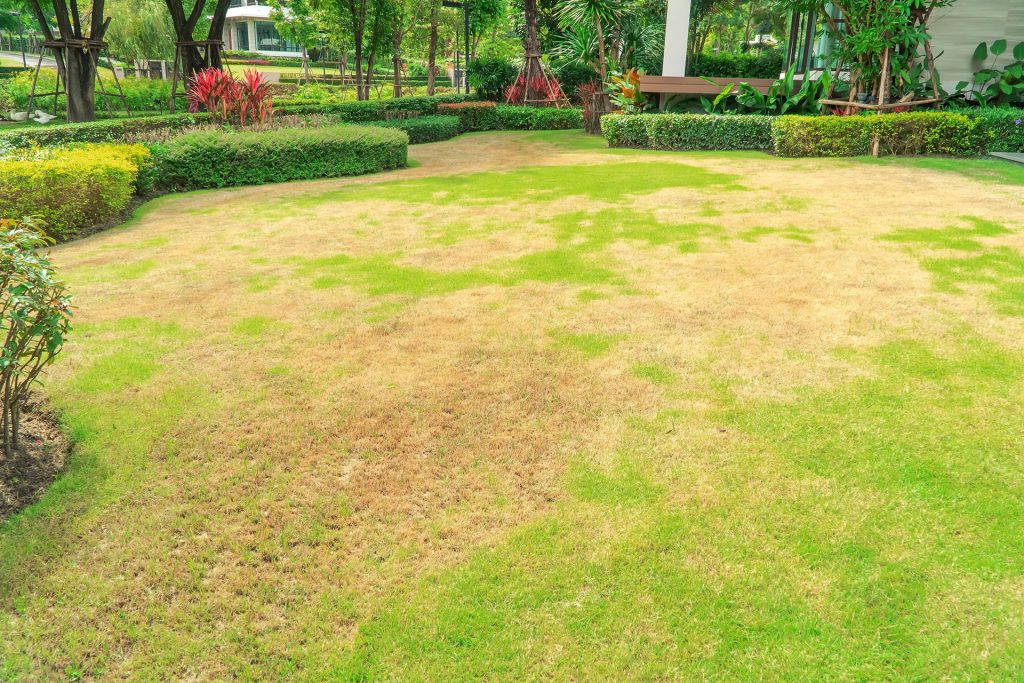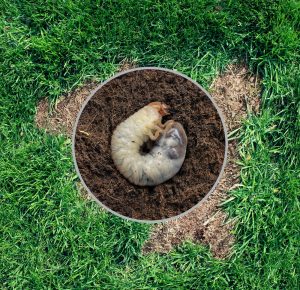
There is nothing more disheartening to a lawn care enthusiast than watching your lawn slowly turn from bright green to a crispy brown. You do everything you can to maintain a beautiful lawn, so watching it slowly die is a terrible feeling. But don’t despair. While it may not be easy, there is always a way of reviving a dead lawn. In some extreme cases, you may have to replace your turf, but in many situations, you can solve your problem by patching some parts of your lawn and leaving others. Here are the steps to reviving a dead lawn.
How to Tell if Your Lawn is Actually Dead
Before you even attempt reviving a dead lawn, it’s essential to determine if the lawn is actually dead. For example, it may just be diseased or damaged, but alive. Alternatively, it could just be dormant.
First, try giving the grass a good soak with a hose or sprinkler. If the water beads up on the surface of the lawn, it’s likely that the grass is dead. Second, take a look at the roots. If they’re dry and brittle, chances are your lawn is toast. Finally, try pulling up a small section of grass. If it comes up easily without any resistance, then it’s time to say goodbye to your lawn.
Common Lawn Diseases
There are several diseases that can cause your lawn to die. The most common are brown patch, red thread, and dollar spot.
Brown patch is a fungal disease that thrives in warm, humid weather. It causes large, circular patches of grass to turn brown and die. Red thread is another fungal disease that appears as thin, reddish-brown threads on the grass blades. Dollar spot is a fungus that attacks the blades of grass, causing small, silver-dollar-sized spots to form.
How Lawns Hibernate
Lawns go dormant in the winter to protect themselves from the cold weather. During this time, the grass will turn brown and stop growing. This dormancy can also happen in the summertime as a response to drought. However, it’s important to note that dormancy is not the same as death. Once the weather warms up, your lawn will green up again!
Determining the Cause of a Dead Lawn
When your grass turns brown and dry, either on parts of your lawn or across the whole area, you may be itching to lay down new sod or start another plan to revive your lawn. But if you want your new lawn to last, you first have to determine the cause of death for the old lawn. If you don’t fix what was wrong, you may find yourself staring at another dead lawn in the near future. There are a few common causes of dead patches or dead lawns, and it may take some detective work to find which one is responsible for your dead lawn.
The Wrong Type of Turf
There are many different turfgrass types, and not every variety is suited for every climate and soil type. If you plant a turfy type that is incompatible with your weather or landscape, it may not last.
The first factor to check is whether your turf grass variety is recommended for your climate zone. In general, the US is divided into three growing zones for turfgrass. The northern half of the country is considered a cool-season zone and requires cool-season grass. The Southwest and Deep South are considered warm-season zones and require warm-season varieties. The area between is regarded as a transitional zone, and lawns can be planted with either type of grass, or a combination to withstand both hot and cold temperatures. If you grow a variety of grass that is not suited for your climate, you may find your grass dying during the season it is least well-adjusted to.
Turf varieties also vary in how they handle different growing conditions. While no turf can thrive in full shade, some varieties can tolerate partial shade better than others. One of the most shade-tolerant varieties of warm-season grass is Zeon Zoysiagrass, sold exclusively by The Turfgrass Group. For lawns with trees and partial shade, Zeon Zoysiagrass will grow better than other sun-loving varieties.
Some varieties are also more suited for salty conditions than others. TifTuf Bermudagrass from The Turfgrass Group grows well in coastal areas where the air and soil are saltier than inland. However, too much salt will kill any turf.
Incorrect Cultural Practices
In the turfgrass industry, the way you cultivate your grass is referred to as the cultural practice of lawn development. That includes irrigation, mowing, fertilizing, aerating, and everything you do to maintain a healthy lawn. If some of your cultural practices are off, you could find that your lawn is suffering.
Poor lawn health can be the result of over or under-watering. If you mostly rely on rain to water your lawn, your lawn could go dormant during a drought. If that’s the case, don’t be alarmed. What looks like a dead lawn is actually a healthy lawn doing exactly what it needs to do to survive in a low-moisture environment. Most turfgrass can go for four weeks without water, and some hardy Turfgrass Group varieties can go even longer.
If you’re unsure whether your grass is dead or dormant, you can try irrigating and waiting a few days to see if it starts to green up. For a quicker test, give the grass a good tug from the base of the blades. Dormant grass still has a healthy root system and will be hard to pull out. By definition, dead grass is dead all the way to the roots and will pull up easily. If the grass is dead, you can still follow the steps below to revive a dead lawn.
Another common cause of dead or weak grass is infrequent mowing. If you let the grass grow too long between mowing, you will end up cutting off more than one-third of the leaf blade, which stresses the plant. During peak growing season—mid-summer in the South—you should be mowing at least once a week. Waiting longer can put your turf at risk. However, avoid mowing dormant grass. The blades are not growing, and mowing can cause stress that isn’t good for dormant grass.
Under-fertilizing is rarely a problem, but if you aren’t fertilizing at all, your soil may become depleted, and your grass will suffer. If you are unsure of your lawn’s fertilization needs, you can take a soil sample to your nearest Extension Office for analysis. In just a few days, you can get results that identify the nutrient levels in your soil and usually include fertilizing recommendations, as well.
Disease and Infestation

Lawn grubs can cause dead spots and damage your lawn
One common cause of dead grass or dead grass spots is disease or infestation. Turfgrass can succumb to fungal infections as well as parasites like grubs. To check for infestation, try pulling out some grass. Grass that is severely infested or damaged by fungus will pull out easily due to root damage. To determine the type of infestation and the best method for controlling it, bring a grass plant sample, including the rood and soil, to a garden store or Extension Office for analysis. You need to resolve any disease or infestation before you can revive a dead lawn or put down new sod.
![Reviving a Dead Lawn [infographic]](https://theturfgrassgroup.com//wp-content/uploads/2020/08/Reviving-a-Dead-Lawn-infographic.jpg)
Reviving a Dead Lawn
Once you have determined that your lawn is actually dead, and you have resolved any underlying problems like disease or infestation, you can begin the path to reviving your dead grass to refresh your property.
Prepare the Lawn
Before you can install a new lawn, you need to prepare the site. Think of it as starting with a clean slate. If you don’t clean up before you try to grow new grass, you’ll likely run into the same issues as before.
Use a non-selective herbicide to kill off weeds and any leftover old grass. Most herbicides need two hours to dry before they are rain-proof, so pick a dry, sunny day with very little wind to apply your herbicide. Avoiding windy days will prevent unintentionally spreading herbicide where you don’t want it. Give the herbicide a full week to kill off all the weeds and grass before continuing to the next step.
Dethatch Your Lawn
Thatch is a layer of decomposing material between the surface of the soil and the blades of grass. A little thatch is a good thing. It helps to insulate the soil and maintain moisture. But too much thatch, more than about a half-inch, can suffocate the roots, making it hard for them to access water, air, and nutrients. Most lawn stores rent vertical mowers that dethatch a lawn. Alternatively, if you are dethatching a small area, you could use a sharp dethatching rake.
Tilling the Soil
With the vegetation killed off, it’s time to till the soil. Turn over the soil to a depth of five or six inches, incorporating all of the dead organic material. Now is the time to add organic material like humus, manure, or organic compost. The added material helps loosen clayey or compacted soil or improve the water retention of sandy soil. It also introduces beneficial microorganisms.
Test and Fertilize the Soil
To prepare the soil for new sod or grass seed, you need to determine the nutrient levels and adjust them to create the ideal environment for new grass. The best way to find out what your soil needs is to take a sample to your nearest Extension Office for testing. Many offices charge a small fee and return results in just a few days. Results from an Extension Office are often more useful than an at-home test because they usually include fertilizing recommendations. Once you know what your soil needs, go to your local garden store to find the right fertilizer and apply it to your lawn.
Planting New Grass and Reviving a Dead Lawn
There are two ways of planting new grass and reviving a dead lawn. The first is to lay down seed. Use a high-quality grass seed and spread it evenly over your prepared lawn. For a larger lawn, you can rent seed spreaders from your local garden store. After the seed is laid down, cover it with a thin layer of soil.
The second method is to lay down sod. Sod is grass that is already growing and comes in rolls or squares with the roots and soil attached. To lay down sod, place it over the soil, making sure each section is set tightly against the one next to it to avoid empty patches. If you are only filling in dead spots, you can use plugs to fill in wherever you need new grass.
Whether you use seed or sod, follow up planting by rolling. Rolling sod helps press it down into the soil so the roots can attach to the ground. Rolling seed helps push the seed down into the earth so it can take root and grow strong.
After planting, water frequently but only enough to keep the soil moist, and never soggy. As the lawn begins to establish itself, reduce the frequency of watering, and increase the quantity. You can tell that the lawn is fully established when you tug on the grass and it doesn’t feel like it’s pulling away from the ground. During this time, it is also important to avoid stressing the lawn. Avoid foot traffic and keep mowing to a minimum, mowing only after the grass has grown to one-and-a-half times its recommended height. Then, raise the height of your mower to avoid cutting off more than one-third of the blade. Over consecutive mowings, lower the blade until you reach the recommended height for your turf variety.
Takeaways on Reviving a Dead Lawn
So if it’s the middle of summer and your lawn is looking a bit worse for wear, don’t despair. While it seems like reviving a dead lawn may be easier said than done, be sure to try these tips before you give up on your yard. With a little TLC, you can have a lush, green lawn again in no time!
